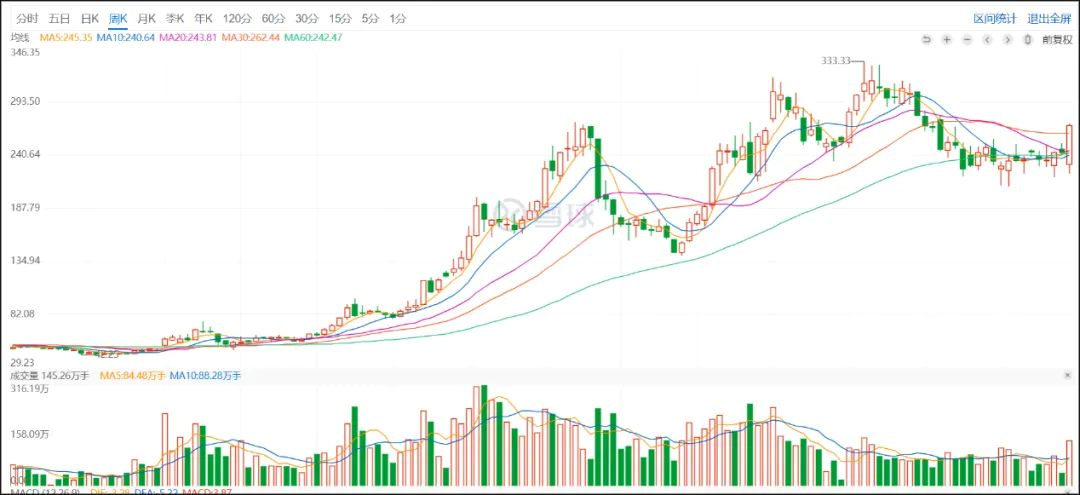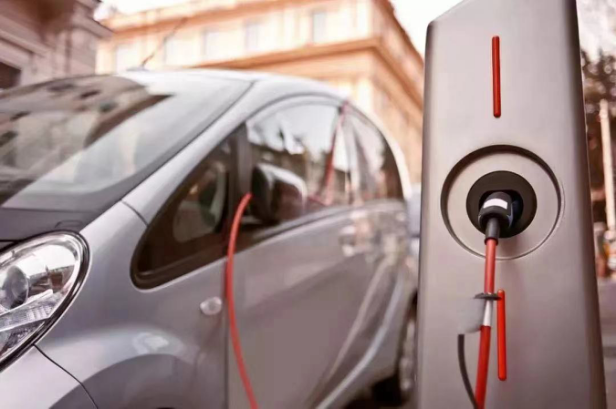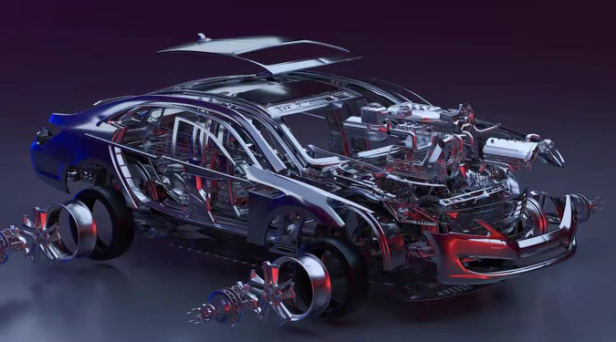The Revival of the Automotive Secondary Market
After almost half a year of dormancy, the automotive secondary market has finally rebounded. After the automotive and parts sector index reached its peak in the fourth quarter of last year, the secondary market has been showing a downward trend for the past six months, mainly due to the sluggish secondary market combined with the basic situation of the car market. In 2022, the Shanghai and Shenzhen 300 index has plummeted by 15%, with the Shenwan automotive industry index falling by more than 20%. From the perspective of the market, automotive stocks have lagged behind value stocks.
With the market entering a reversal in May, the automotive sector has also seen a significant rebound. Starting last week, the automotive sector has seen consecutive daily limit ups. On May 11, more than 10 companies in the automotive and parts sectors hit the daily limit up, and last Friday, passenger car companies Changan Automobile, Great Wall Motor, and Xiaokang Stock were the first to achieve the daily limit up.
In this wave of reversal, the best performing passenger car companies are BYD, Great Wall Motor, and Changan Automobile. Today, I’m here to discuss with you why automotive stocks rebounded at this time, why BYD, Changan, and Great Wall are leading the rebound, and what are the future risks for the automotive sector?
Has the Market Changed Direction?
The automotive sector has never been a vanguard or a center of the market. As I mentioned before, this year is a game between value stocks and growth stocks. Under the steady growth trend, growth stocks have been suppressed by value stocks. The new energy, automotive, and pharmaceutical sectors that we are widely concerned about mostly belong to the category of growth stocks.
In May, the activity of the secondary market has significantly increased. After the Shanghai Composite Index fell below 3,000 points, according to “historical rules,” it saw a rapid rebound. Especially last week, the average daily trading volume of the two markets exceeded one trillion yuan again, and growth stocks, mainly in new energy, semiconductors, and automotive industries, saw a major rebound.
It is still too early to judge whether this is a rebound or a reversal. For now, let’s call it a rebound. The real bottom is gradually formed during continuous shocks. According to market rules, when the Shanghai Composite Index falls more than 500 points, it often forms a bottom-building period and continues to shock. Currently, the market has shown a “stop-loss” signal.
There are many factors for the market rebound, but I believe the most critical factor is that the prices of growth companies are already very cheap and can gradually enter the configuration range. The lowest P/E ratios of companies such as Contemporary Amperex Technology (CATL) and BYD have fallen below those in 2019. From the perspective of a two-to-three year cycle, this is indeed the “bottom of the market.”The change in market sentiment provided the underlying basis for the rebound, which was the driving force for the rise of the auto sector last week. According to Mr. Li, there were two reasons for this. One was the positive expectations of Shanghai’s resumption of work and production after the relaxed epidemic situation, and the other was short-term speculation fueled by the automobile industry policy to encourage rural consumption.

The expectation of a market reversal after the easing of the epidemic situation was the fundamental reason for the rise in auto stocks last week. As Mr. Li mentioned earlier, the valuation of A-shares is now on par with the end of 2018 and March 2020, and in some sectors, the valuation is even lower than in 2019. The bearish sentiment in the market has been largely released. For example, a leading battery company experienced an epidemic recently, but the market only shrugged it off. In the past, it would most likely have been hit with a limit down.
With the relaxation of the epidemic situation, the automobile industrial chain in cities like Shanghai will experience positive expectations of resumption of work, and the pressure on supply caused by the shortage of chips and upstream raw materials will also be alleviated to some extent. The production and delivery cycle of auto and auto parts enterprises will be greatly reduced, and in the extremely bearish situation of the auto sector, it is only natural that valuations return to reasonable levels. Researchers all know that wholesale sales in May are likely to increase, so the secondary market will rush to place bets before the industry is favorable.
The automobile policy of encouraging rural consumption, which is circulating in the market, was the primary driving force for the rise of the passenger car sector last Friday. Industry rumors have been circulating that a new round of automobile consumption policies will be released soon, with the policy being issued as early as this month. We are not sure about the degree of policy support, but one thing is certain: whether it is ordinary automobile consumption or ultra-heavy financial subsidies, they will all bring benefits to domestic brands.
Why did these companies warm up first?
Among the companies in this round of market, the leading domestic brands are the most worth paying attention to.
In the passenger car sector last Friday, Xiaokang shares were the first to hit the daily limit, followed by Changan Auto and Great Wall Auto, although BYD also rose significantly, it did not hit the limit price. As Mr. Li mentioned in a previous article, once the automobile market hits a reversal, leading companies will be BYD, Great Wall Auto, and Changan Auto. The market last week confirmed this judgment. Mr. Li would like to share with you the reasons from both short-term and long-term perspectives:
In the short-term, why did Changan and Great Wall hit the limit while BYD did not? The reason for the sharp rise in the market last Friday was the expectation of automobile consumption policies and market valuation.
 On April 25th this year, the General Office of the State Council issued the “Opinions on Further Releasing Consumer Potential and Promoting Sustainable Recovery of Consumption”, proposing to guide enterprises to carry out promotions in rural areas, focusing on automobiles and home appliances. The biggest beneficiaries of the automobile promotion in rural areas are Changan Automobile and Great Wall Motor, these two companies are leading the independent brand, with the main sales areas in third- and fourth-tier cities and rural areas, especially Changan Automobile, which is best suited for rural areas with its Oushang brand. Although BYD has performed well in the market, its new energy models already enjoy financial and tax subsidies, and high-value new energy is not the best option for promotions in rural areas.
On April 25th this year, the General Office of the State Council issued the “Opinions on Further Releasing Consumer Potential and Promoting Sustainable Recovery of Consumption”, proposing to guide enterprises to carry out promotions in rural areas, focusing on automobiles and home appliances. The biggest beneficiaries of the automobile promotion in rural areas are Changan Automobile and Great Wall Motor, these two companies are leading the independent brand, with the main sales areas in third- and fourth-tier cities and rural areas, especially Changan Automobile, which is best suited for rural areas with its Oushang brand. Although BYD has performed well in the market, its new energy models already enjoy financial and tax subsidies, and high-value new energy is not the best option for promotions in rural areas.
Although they are both pioneers in the turnaround, the secondary market has different positions on the three companies. BYD is in the first tier, is a large market value leader and also a bottom-holding stock of funds, mainly performing “stably”, with no sharp rise or fall. Great Wall Motor and Changan Automobile are in the second tier, not large market value leading companies, and funds may adjust their positions on a quarterly or even monthly basis, making it easier to see sharp increases and decreases, so the latter two are more likely to have a trading limit than the former.
In the long term, fundamentals will determine how high and how long the current turnaround lasts. Analysts in the secondary market have always had differing opinions with hot money on fundamentals. The former likes fundamentals, while hot money dislikes them. Many fund managers may even jokingly criticize analysts in bad market conditions, saying their main responsibility should be to “inquire about news” rather than conduct research, but it must be said that in order to stand in the market for a long time, company fundamentals are the core.
Among all the car companies in A-share, BYD and Changan Automobile are the best performing in the Q1 report, while Great Wall Motor is affected by the supply chain and although deliveries were lower than expected, market orders are still booming.
Due to the better than expected sales of new energy vehicles in Q1, BYD achieved revenue of 66.825 billion yuan in Q1 2022, a year-on-year increase of 63.02%; net profit of 808 million yuan, a year-on-year increase of 240.59%. The revenue achieved market expectations, and sales set a new historical high, which to some extent offset the profit pressure brought about by the rise in upstream raw material prices.
Changan Automobile also had a very good Q1 report due to investment income from Avita. The main income was 34.576 billion yuan, a year-on-year increase of 7.96%; net profit attributable to the parent company was 4.536 billion yuan, a year-on-year increase of 431.45%, exceeding the full-year net profit of 2021 (3.552 billion yuan).
Of the three companies, Great Wall Motor was most affected by the epidemic in Q1, with its main production bases and supporting suppliers concentrated in Shandong and the Yangtze River Delta. Since February’s epidemic, the Suzhou epidemic has directly affected the ESP supply of Bosch to Great Wall Motor, which led to a 14.16% year-on-year decrease in sales of Great Wall Motor in Q1.

But since the value of Great Wall Motors’ single bike is rising, its operating revenue has achieved positive growth. In the first quarter, the revenue of RMB 33.619 billion increased by 8.04% year-on-year, and the net profit of RMB 1.634 billion decreased by only 0.34% year-on-year. In addition, the orders in the first quarter have not decreased, and the secondary market is still optimistic about the market performance after resumption of work.
Is there still risk in the future?
Although the market has rebounded, the automobile sector is not optimistic. Lao Li believes that the current market is quite different from the second quarter of last year: the current market linkage is more complicated and there are more uncertain factors. Although there are favorable policies such as the “new energy vehicles to the countryside”, the market demand may be weak. From the perspective of supply and demand, companies that perform well in the second quarter and even the second half of the year must achieve a balance between supply and demand.
Let’s first look at the demand side. At the beginning of the year, many friends believed that the conventional fuel vehicle market in 2022 might continue to be lukewarm, while the new energy vehicle market would still grow rapidly. Entering the second quarter, everyone found that due to the pandemic, economic weakness, and the negative impact of the secondary market, the performance of fuel vehicles was completely unexpected, and the originally favorable new energy vehicles were also greatly affected.

Lao Li believes that even if the stimulus policies are introduced, the sales of fuel vehicles will not increase significantly, at most, they will remain flat compared to last year. Although Chang’an Automobile and Great Wall Motors have product advantages, the key is to convert them into sales. If the market sales volume rebounds in July and August, then the market will inevitably be good after entering the peak season of September and October, and the performance of automobile stocks is expected to continue until the fourth quarter. If policies are introduced and market performance is not good in July and August, the reversal of this round of the automobile sector will not last too long.
Compared with the uncertainty of conventional fuel vehicles, the new energy vehicle sector is certain, and the problem lies in the height of the reversal. If there were no pandemic, Lao Li believes that the sales of new energy vehicles this year would inevitably exceed 5 million units. However, both the supply and demand sides have brought major impacts to the new energy vehicle sector. The supply side performance is a fluctuation in upstream raw material prices + chip shortage, while the demand side performance is weakened consumption + pandemic control. If the supply side can perform well, BYD will maintain the same momentum as in the first quarter in the second quarter, and breaking a trillion yuan in the third quarter is just a matter of time.
Talking to here, Lao Li wants to explain the definition of automobiles. Many friends often ask Lao Li about the difference between the automobile sector in the secondary market, the electric new sector, and the automobile sector in the industry. Here, Lao Li also shares it with everyone:
In the industry, the automobile sector actually includes conventional fuel vehicles + new energy vehicles + components (including batteries) + aftermarkets. The upstream of the automobile sector refers to Tier 1 component companies, such as the three electric and traditional components. The middle stream is the whole vehicle companies, such as BYD and Chang’an Automobile. The downstream is in the automobile aftermarket field.
In the secondary market, the research sector related to automobiles is “New Energy + Automobiles”, where “New Energy” refers to electric power and new energy, including upstream power generation and photovoltaics, midstream materials, downstream batteries, etc. Contemporary Amperex Technology Ltd. (CATL) is a downstream company in the New Energy sector; the automotive sector in the secondary market focuses on fuel vehicles + components (excluding batteries), and new energy vehicle companies such as BYD and WmAuto have involvement in both the New Energy and Automotive sectors.
When a new industry develops from 0 to 1 and in its budding stage, the profitability of upstream companies is always highest. During the past three years or so, the rise of new energy vehicles has benefited most in the New Energy sector, that is, upstream material and battery companies based on the distribution of the new energy auto industry. As the industry moves into the growth phase, the profits of upstream companies will inevitably be squeezed. The increase in market demand will drive the profits of downstream enterprises. Therefore, in the second stage of industry development, companies like BYD will stand out.
There are many automotive companies listed on the A-share market, but there are not many truly new energy vehicle companies. BYD is one, and Changan Automobile and Great Wall Motor will inevitably face the transformation to fully new energy. 2022 will be the first year of transformation.
This article is a translation by ChatGPT of a Chinese report from 42HOW. If you have any questions about it, please email bd@42how.com.
